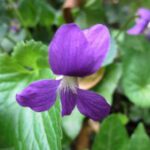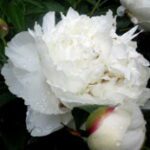seedlings
This year spared us the usual unpleasantness: no hard freezes, no long stretches of unholy temperatures, no weird weather swings. As a result the spring planting is unfolding right on schedule to my great delight.
Usually after a seedling grown in a seed pod is transplanted into the garden, one of two things happen, and I had my fair share of both: it either doubles its growth speed when exposed to the sunshine and the rich garden soil or collapses dramatically under your very eyes, making you feel like a horrible person. Who would do something like this to a little plant, you quietly ask yourself, as your heart sinks into a puddle of misery and self loathing.
The young plants grow tentatively through the summer and fall, and if they like their new home, sprout out of the ground the following spring with confidence and grit, determined to stay. They don’t look like much for the first couple of years, but that’s where the annual flats come in, to fill the gaps around the feature plants until they really take off.
When a plant thrives, it does so in a way that is very rewarding. Of course there are some that will do well by default, annuals mostly, like zinnias and marigolds, and I always start a few, for morale, but the goal of every spring seed starting is to bring a rare and special perennial into the flower border, a goal that fails a lot more than it succeeds, but when it does succeed it’s worth the wait and the hassle!
Among the plants that barely made it from seed to the garden and took some time to get established I can count giant sky blue delphiniums, Maltese cross, wild bleeding hearts, Siberian wallflowers, and a clump of larkspur sporting the deepest shade of purple.
This year the luck of the draw favored goat’s rue, two varieties of blue asters, of which one is fragrant, and bluebells, finally, I’ve been trying to start them for years! Quite a good outcome for one spring, usually if I get even one new perennial established I call the season a success.




 Previous Post
Previous Post Next Post
Next Post




